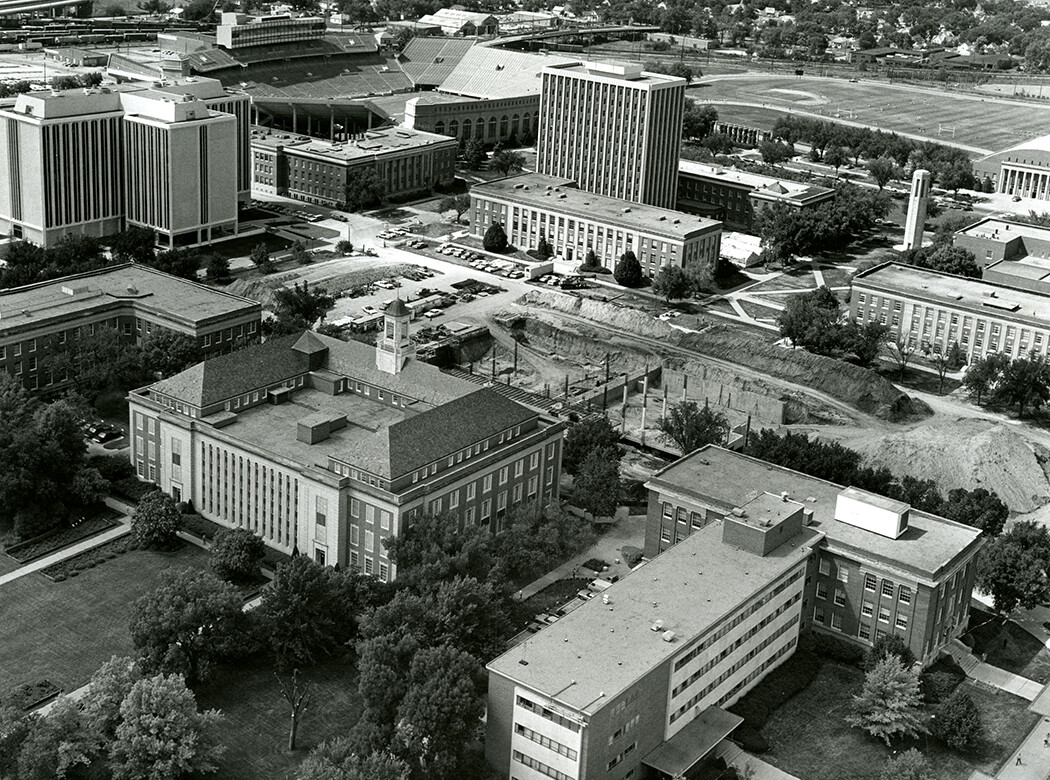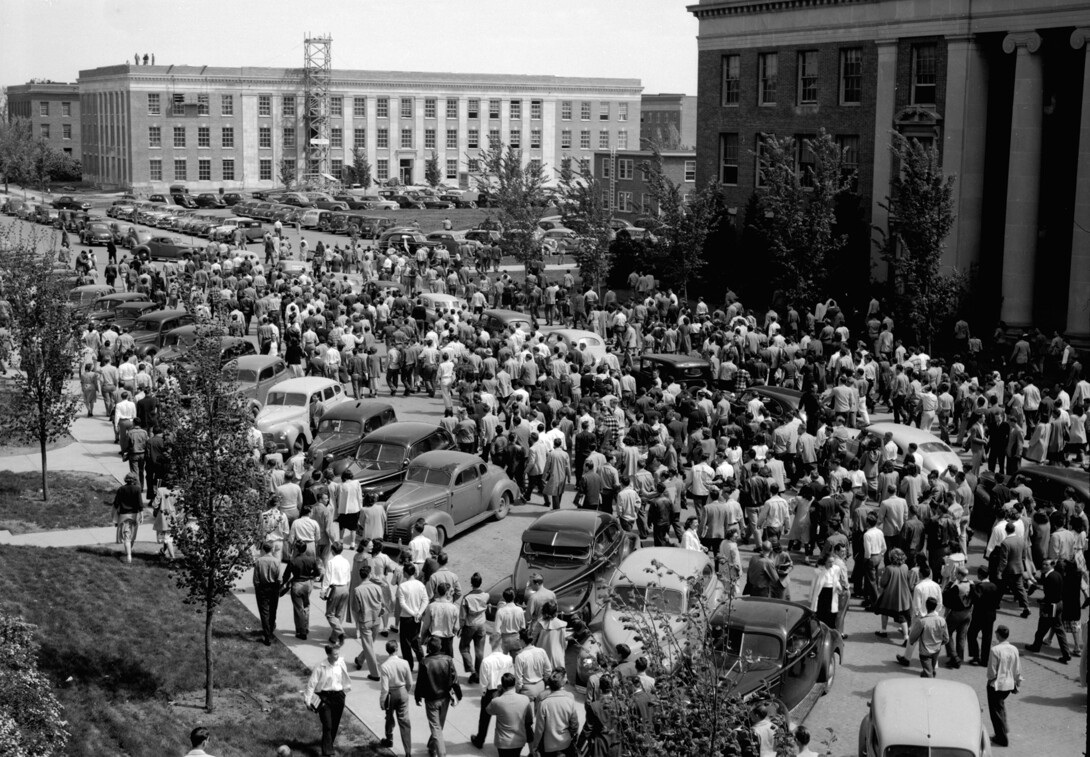
From celebrated milestones to quirky moments, a new book by Kay Logan-Peters uses historic photos to tell the nearly 150-year story of the University of Nebraska–Lincoln.
The book, “University of Nebraska–Lincoln,” is part of Arcadia Publishing’s Campus History Series. It features brief chapter writeups accompanied by more than 180 images ranging from the university’s first building standing amid prairie grasses to current Chancellor Ronnie Green.
For Logan-Peters, professor of University Libraries based in the Architecture Hall branch, the book came about as an extension of ongoing research into the history of campus architecture. Through that project, Logan-Peters launched and continues to expand upon an online tour of historic campus buildings.
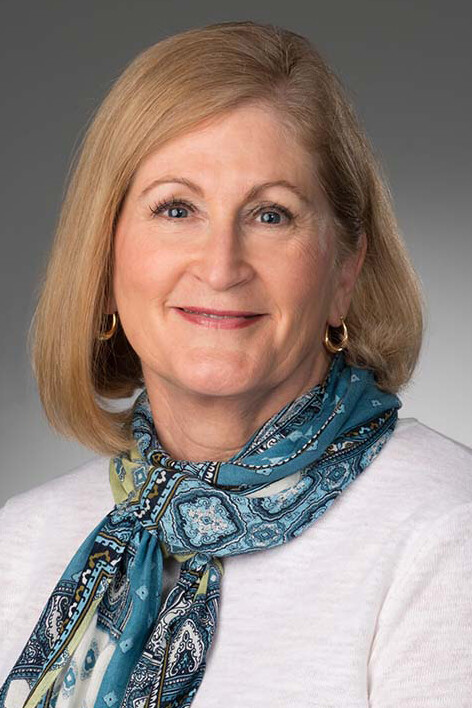
“This book is certainly much broader than my previous research into campus architecture,” Logan-Peters said. “But I’ve become pretty familiar with the stories behind the higher-level decisions and the people who made them. I thought this book would be fun, especially since I’m a nerd who likes to work on almost any kind of puzzle.”
Working with the University Archives, Nebraska State Historical Society and Lincoln Journal Star, Logan-Peters combed through more than 10,000 images to compile the book. She also consulted campus history books — primarily, the two volumes of “Centennial History of the University of Nebraska” by Robert Manley and R. McLaren Sawyer, and “Prairie University” by Robert Knoll — as well as digital newspaper archives scanned through the Center for Digital Research in the Humanities at Nebraska.
“I started looking at and organizing the photos as a way to define the chapters in the book and put the story together,” Logan-Peters said. “It was a tricky process. I would find great photos and have to set them aside because there was no information available. Then, months later, I would come across a description in a yearbook or some other source.”
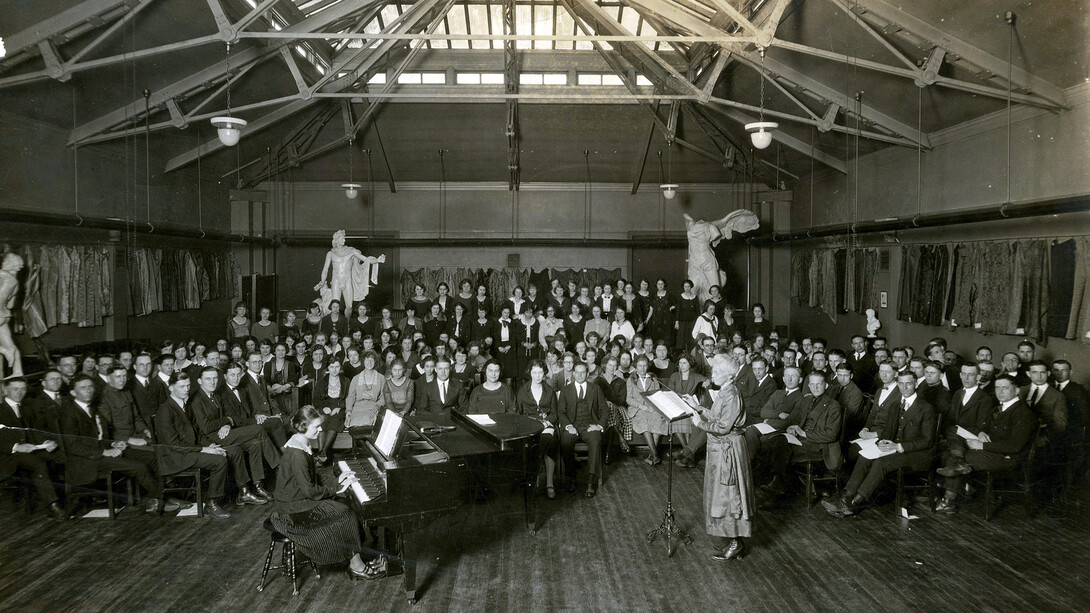
The book employs chronological order to follow university history, starting with the founding in 1869 to more recent shifts to create a university system that links the various University of Nebraska institutions. Key chapter topics include pioneering women, growth in the early 1900s, student life, and the transition to becoming a major research university.
“There were certain photos I felt that I had to include, those that told the basic history of the university,” Logan-Peters said. “I also wanted to include images that weren’t so basic. Photos of events and activities on campus that people may have never seen before.”
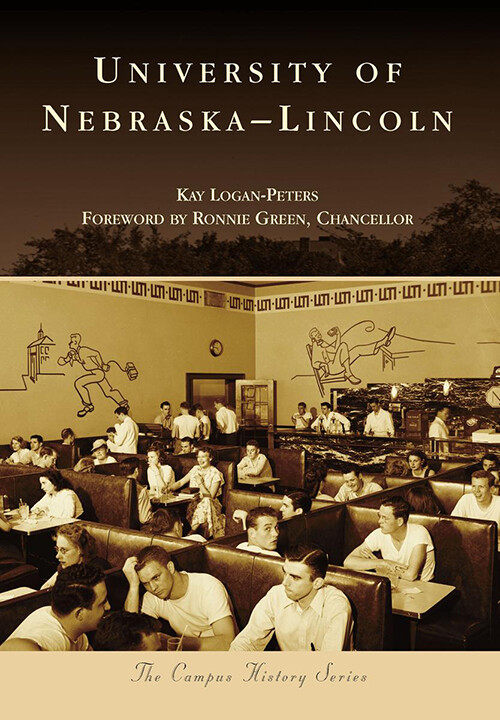
Some of her more obscure finds include photos of a parking riot in 1948 when only street parking was available, an Olympic-like set of games designed to minimize fighting among undergraduates, and the adventures of Carrie Barbour, an art instructor who ventured out on paleontology digs to assist her brother, E.H. Barbour, curator of the University of Nebraska State Museum from 1891 to 1941.
“The more I researched, the more I was surprised by the constraints put on women on campus, both students and faculty,” Logan-Peters said. “In particular, there was this one group of women called the GOI, or Go Out Independents, who were fascinating in terms of the push for women’s liberation.”
When the GOI formed in the 1890s, young women were expected to have an escort while in public or attending college-sponsored events. Women in the group fought that expectation, attending evening lectures, sporting events and literary society gatherings without an escort. Through her research, Logan-Peters found that the women had the complete support of then-Chancellor James Garfield.

Other historic moments that interested Logan-Peters include details from the 1960s (including visits by Richard Nixon and Bobby Kennedy) and photos of city streets that previously went through campus but are now closed and converted to pedestrian malls.
The 129-page book is available through Arcadia Publishing online at local bookstores, including the University Bookstore. A signing is scheduled for 2 to 4 p.m. Nov. 1 in the Adele Hall Learning Commons in Love Library North.
